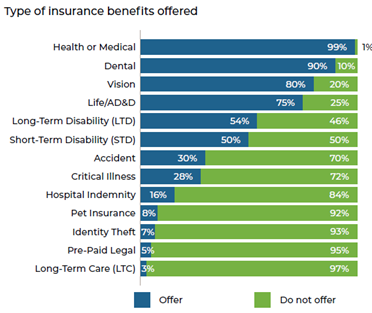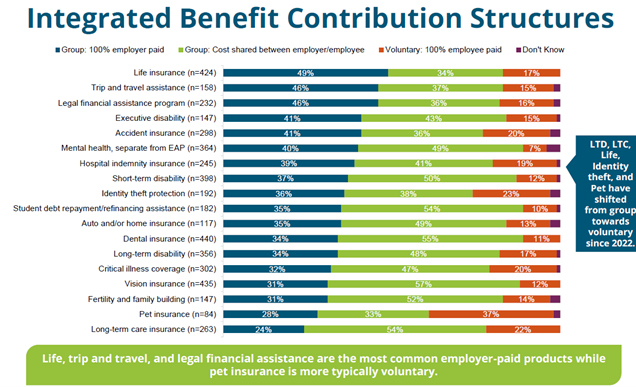In today’s rapidly evolving workforce, one-size-fits-all benefits are no longer sufficient to meet the diverse needs of employees. As expectations shift toward personalized and flexible offerings, voluntary benefits are emerging as a vital solution. These supplemental programs empower employees to customize their benefit packages by adding coverage tailored to their unique personal, health, and financial circumstances.
For employers, voluntary benefits offer significant advantages, including enhanced employee engagement, improved retention rates, and a more comprehensive approach to wellness. Additionally, since employees often bear the cost of these programs, they present a low-risk, cost-effective investment that boosts satisfaction and productivity.
What Are Voluntary Benefits?
Voluntary benefits are optional, supplemental offerings provided by employers in addition to traditional health insurance and retirement plans. These benefits are typically employee-paid, allowing individuals to select the coverage that best meets their needs.
Common examples of voluntary and supplemental benefits include:
- Health and Wellness Coverage: Critical illness, hospital indemnity, accident insurance, dental, vision, and other health-related services
- Financial Support: Life insurance, accidental death and dismemberment (AD&D) insurance, disability insurance, long term care, and other financial safety nets for employees and their families
- Legal Protections: Legal services, identity theft protection, and other personal security-related offerings
- Pet Insurance: Coverage for employees’ pets, offering financial protection in case of veterinary emergencies.
This graph breaks down the most common insurance benefits offered according to Alera Group’s 2024 Employee Benefits Survey:

Meeting Employee Needs: The Rise of Voluntary Benefits
As the workforce becomes more diverse, employees are seeking benefits that go beyond traditional offerings. Over 75% of employers offer Medical, Dental, Vision, Life, and AD&D, with the number and type of benefits varying by employer size. Larger employers tend to offer a greater variety of benefits and are more likely to offer supplemental products, such as pet insurance. Employees want to feel valued, and a broad range of benefits demonstrate an employer’s commitment to their well-being, while also allowing employees to select products that best fit their needs.
Voluntary benefits align with the growing demand for personalized, flexible workplace solutions. With more employees working remotely and managing diverse personal circumstances, the ability to choose supplemental benefits has become increasingly important.
The Value of Voluntary Benefits for Employers and Employees
For Employees:
- Customization: Employees can select the benefits that best fit their lifestyle, such as additional health coverage, financial protection, or wellness services
- Financial Accessibility: Group rates make many voluntary benefits more affordable compared to individual plans
- Peace of Mind: A broader range of benefits provides employees with greater confidence in managing health, financial, and personal challenges
For Employers:
- Attracting Top Talent: A comprehensive suite of voluntary benefits enhances an employer’s appeal to prospective employees
- Improved Employee Engagement: Employees who feel supported by robust benefits are more likely to remain engaged and productive
- Cost Efficiency: Since employees typically cover the costs, employers can expand their benefits offerings without significant additional expenses

How Can Employers Implement Voluntary Benefits?
To introduce voluntary benefits successfully, employers should follow these steps:
1. Understand Employee Needs
Use employee surveys or analyze workplace trends and healthcare data to identify areas where employees might benefit from additional support, such as health coverage, financial protection, or wellness initiatives.
2. Evaluate Vendors and Packages
Assess potential vendors and benefits packages based on factors like cost, employee participation rates, and ease of administration. Ensure employees have easy access to these benefits and understand their value.
3. Communicate and Educate
Clear communication and ongoing education are crucial. Employers should regularly inform employees about available options, provide updates, and encourage participation.
Voluntary benefits are becoming an essential tool for employers seeking to support their workforce in ways that go beyond traditional offerings. By offering flexibility and choice, voluntary benefits empower employees to address their personal health, financial, and well-being needs while helping employers enhance engagement, retention, and overall satisfaction.


